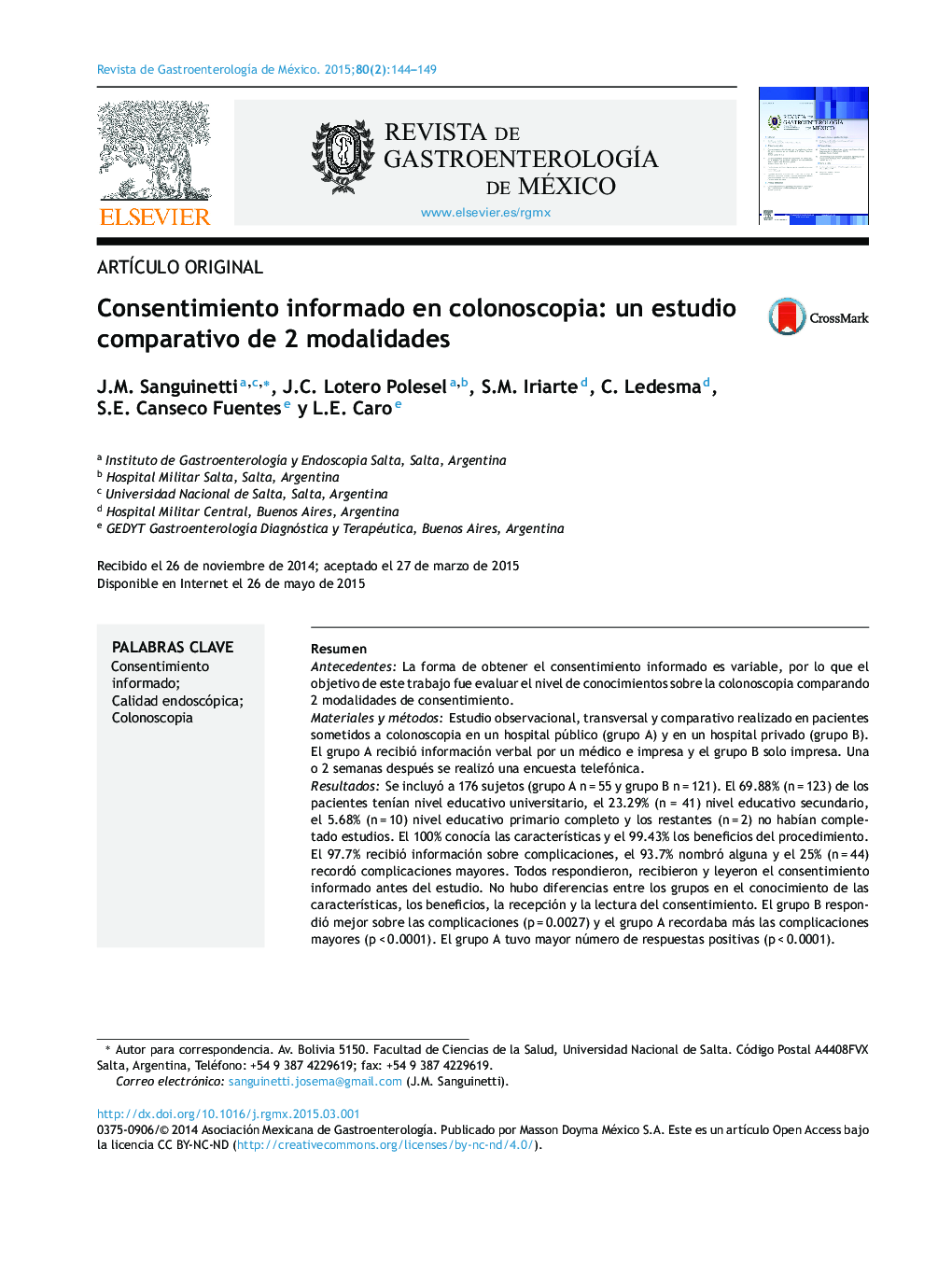| Article ID | Journal | Published Year | Pages | File Type |
|---|---|---|---|---|
| 3318709 | Revista de Gastroenterología de México | 2015 | 6 Pages |
ResumenAntecedentesLa forma de obtener el consentimiento informado es variable, por lo que el objetivo de este trabajo fue evaluar el nivel de conocimientos sobre la colonoscopia comparando 2 modalidades de consentimiento.Materiales y métodosEstudio observacional, transversal y comparativo realizado en pacientes sometidos a colonoscopia en un hospital público (grupo A) y en un hospital privado (grupo B). El grupo A recibió información verbal por un médico e impresa y el grupo B solo impresa. Una o 2 semanas después se realizó una encuesta telefónica.ResultadosSe incluyó a 176 sujetos (grupo A n = 55 y grupo B n = 121). El 69.88% (n = 123) de los pacientes tenían nivel educativo universitario, el 23.29% (n = 41) nivel educativo secundario, el 5.68% (n = 10) nivel educativo primario completo y los restantes (n = 2) no habían completado estudios. El 100% conocía las características y el 99.43% los beneficios del procedimiento. El 97.7% recibió información sobre complicaciones, el 93.7% nombró alguna y el 25% (n = 44) recordó complicaciones mayores. Todos respondieron, recibieron y leyeron el consentimiento informado antes del estudio. No hubo diferencias entre los grupos en el conocimiento de las características, los beneficios, la recepción y la lectura del consentimiento. El grupo B respondió mejor sobre las complicaciones (p = 0.0027) y el grupo A recordaba más las complicaciones mayores (p < 0.0001). El grupo A tuvo mayor número de respuestas positivas (p < 0.0001).ConclusionesLa combinación de información verbal y escrita logra mejor nivel de conocimientos por el paciente.
BackgroundThe manner in which informed consent is obtained varies. The aim of this study is to evaluate the level of knowledge about colonoscopy and comparing 2 methods of obtaining informed consent.Materials and methodsA comparative, cross-sectional, observational study was conducted on patients that underwent colonoscopy in a public hospital (Group A) and in a private hospital (Group B). Group A received information verbally from a physician, as well as in the form of printed material, and Group B only received printed material. A telephone survey was carried out one or 2 weeks later.ResultsThe study included a total of 176 subjects (group A [n = 55] and group B [n = 121]). As regards education level, 69.88% (n = 123) of the patients had completed university education, 23.29% (n= 41) secondary level, 5.68% (n = 10) primary level, and the remaining subjects (n = 2) had not completed any level of education. All (100%) of the subjects knew the characteristics of the procedure, and 99.43% were aware of its benefits. A total of 97.7% received information about complications, 93.7% named some of them, and 25% (n = 44) remembered major complications. All the subjects received, read, and signed the informed consent statement before the study. There were no differences between the groups with respect to knowledge of the characteristics and benefits of the procedure, or the receipt and reading of the consent form. Group B responded better in relation to complications (P=.0027) and group A had a better recollection of the major complications (P<.0001). Group A had a higher number of affirmative answers (P<.0001).ConclusionsThe combination of verbal and written information provides the patient with a more comprehensive level of knowledge about the procedure.
